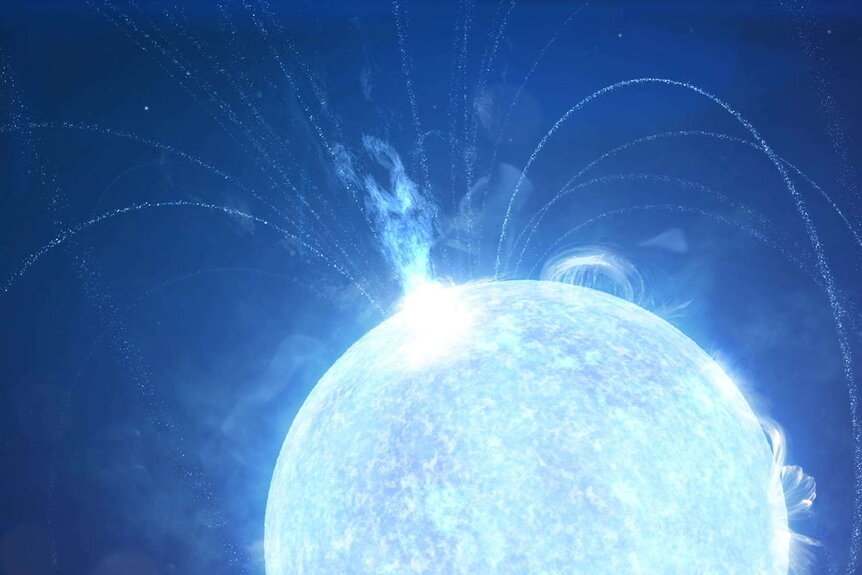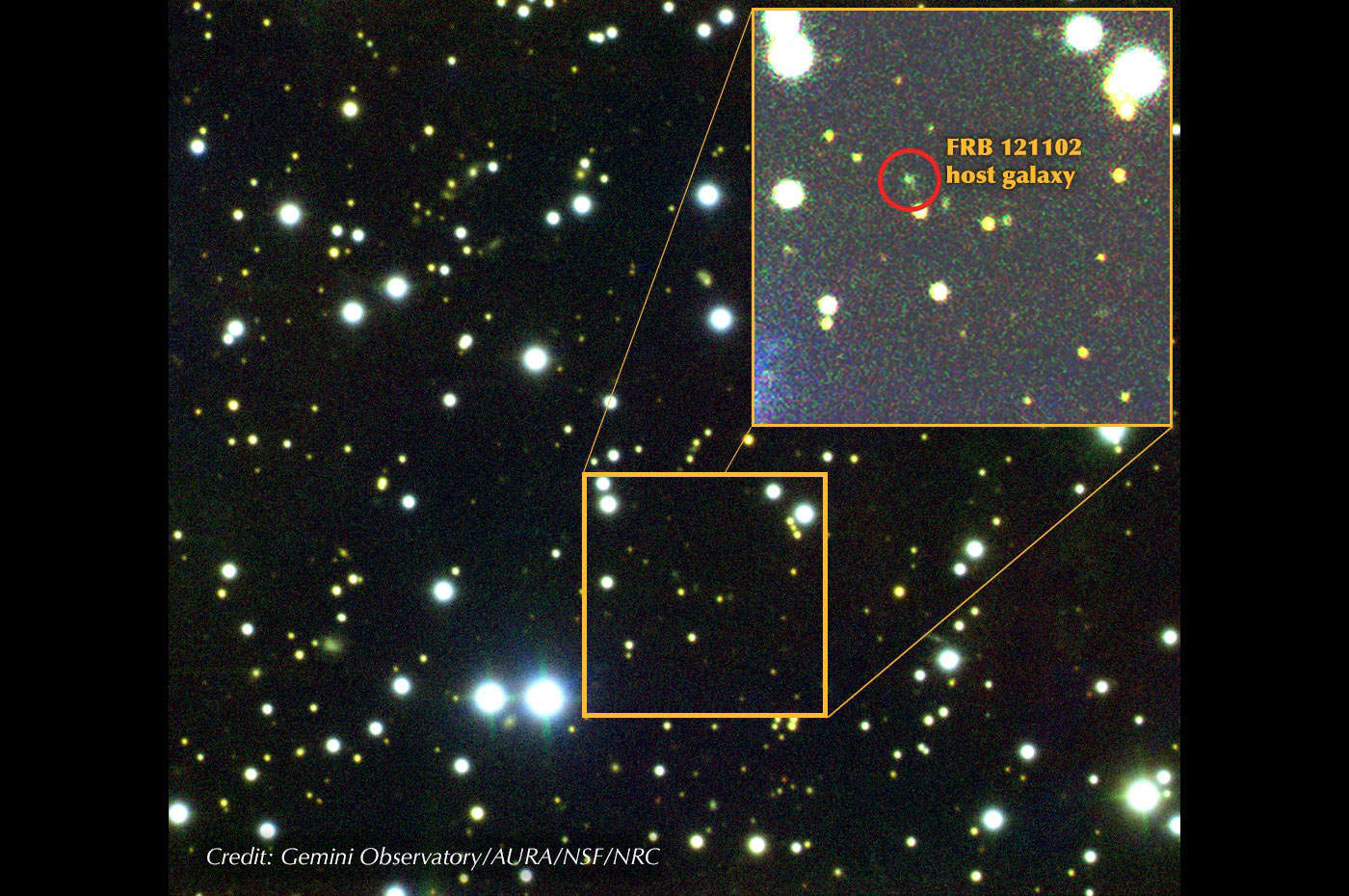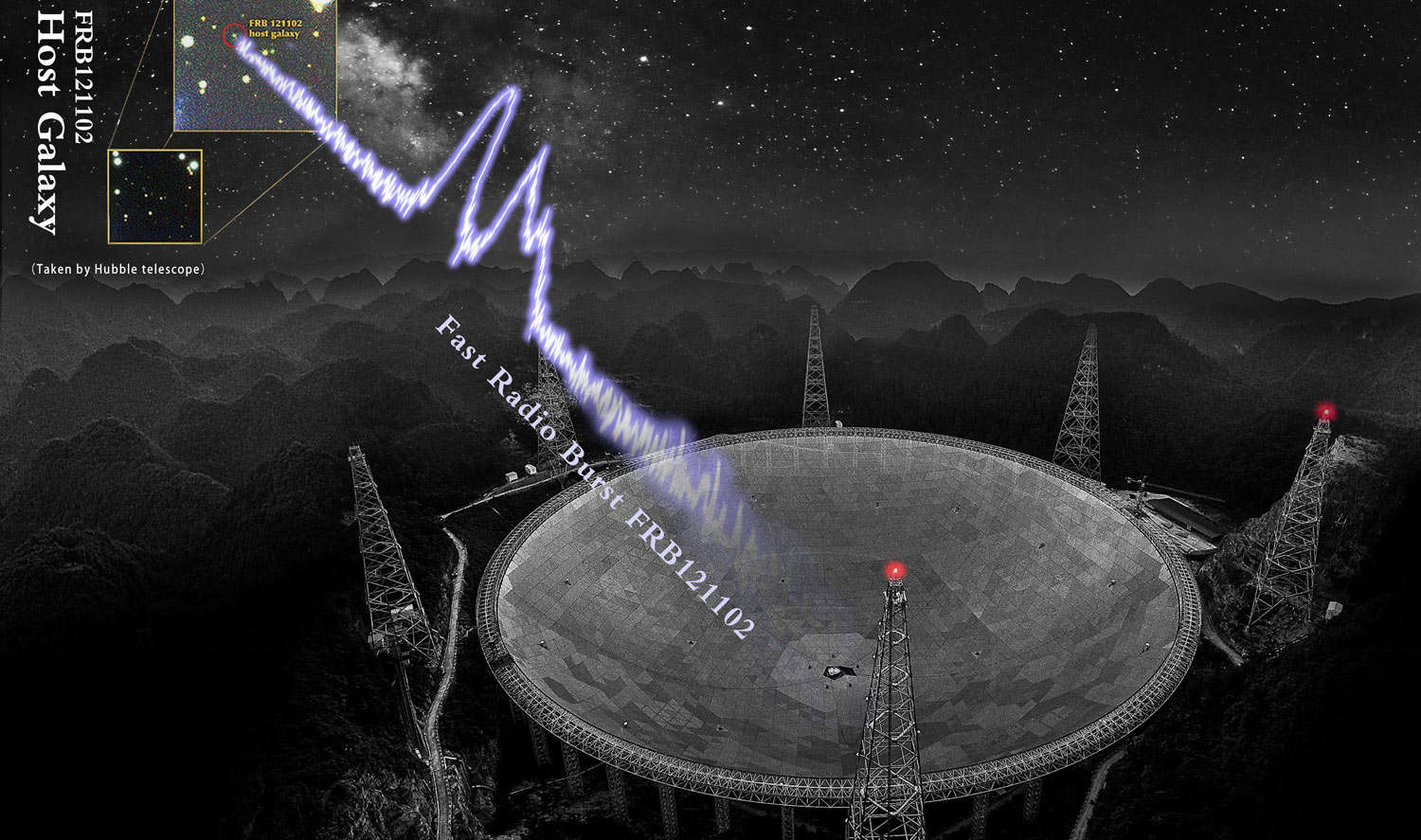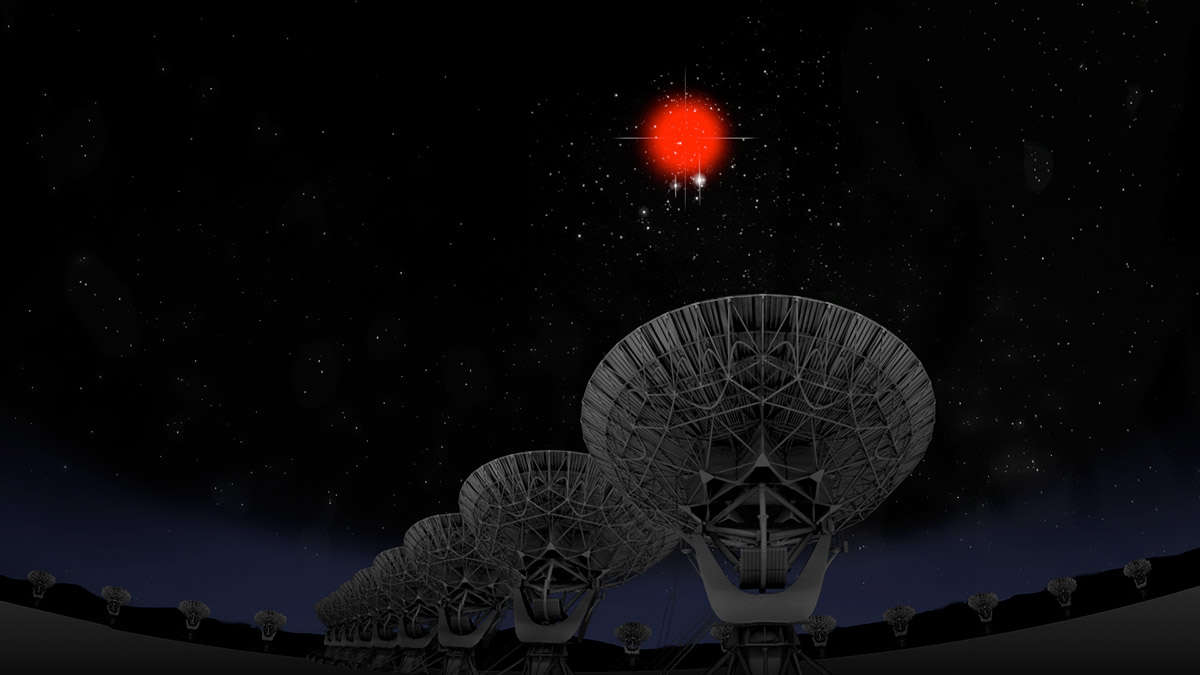Create a free profile to get unlimited access to exclusive videos, sweepstakes, and more!
A single object ripped out over 1,600 Fast Radio Bursts in just a few days and no one knows why
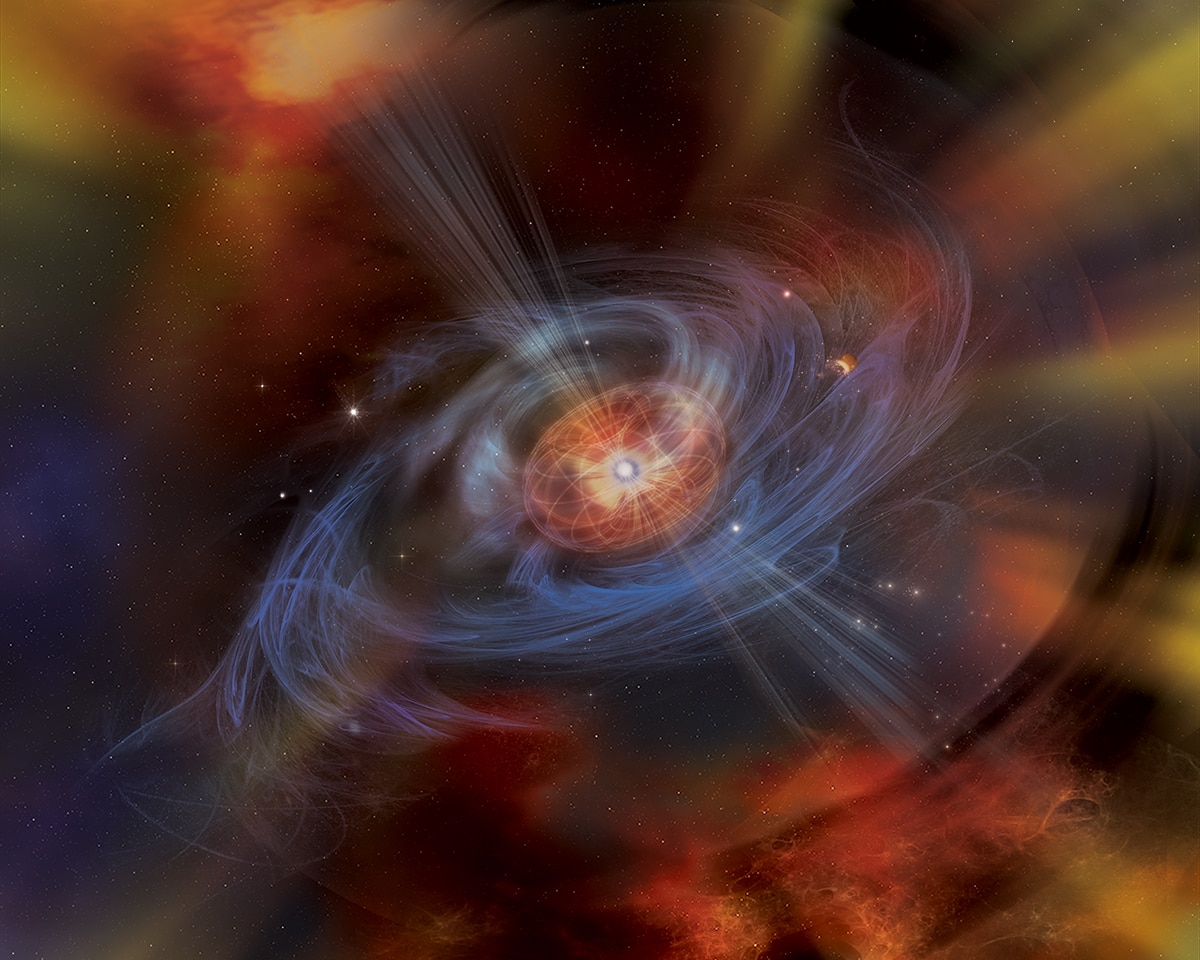
Let's cut right to the chase, shall we? No one knows what causes Fast Radio Bursts, intense but extremely short blasts of radio waves. By "intense" I mean pouring out possibly millions of times the energy the Sun does, and by "short" I mean short: they literally last a millisecond or so. A thousandth of a second.
The first ones detected (in the early 2000s) were one-and-done, flashing once and then disappearing. A breakthrough occurred in 2016 when a Fast Radio Burst (or FRB) that went off first in 2012 was seen to repeat several times, implying that the cause wasn't totally destructive explosions. Then one seen in 2018 was traced to the spiral arm of a galaxy 500 million light years away. Spiral arms are where massive stars are born and die, which implied the engines behind FRBs could be neutron stars or black holes.
Then one was found in the Milky Way, our home galaxy, and it came from a magnetar, a young neutron star with an extremely powerful magnetic field. These are terrifying objects with magnetism up to a quadrillion times stronger than Earth's magnetic field. They are capable of immense explosions; one such event reached us in 2004 and physically affected Earth's magnetic field and upper atmosphere despite coming from a magnetar 50,000 light years away.
Yeah. Powerful.
While magnetars do seem to be a likely source, that's not a lock. The best way to figure this out is to study the ones that repeat their bursts, collecting as much data as possible to see how these ridiculously overmuscled explosions behave.
So a team of scientists used the huge Five hundred-meter Aperture Spherical radio Telescope in China to watch FRB 121102 — the one in 2012 that was the first seen to repeat — over a time range of 47 days between August 29 and October 29, 2019. They had a total observing time of 59.5 hours, and during that time they saw FRB 121102 burst a staggering 1,652 times.
Over sixteen hundred times. In less than 60 hours of observations. That is a lot of activity.
The precise location of FRB 121102 was first made using the Very Large Array of radio dishes in New Mexico, and when the Gemini (optical/infrared) telescope was pointed at the coordinates it saw a fuzzy blob that turns out to be a dwarf galaxy (like the Milky Way but much smaller) about 2.4 billion light years from Earth.
The myriad of bursts seen in the FAST observations were spread out in terms of energy emitted (think of it like brightness). Knowing the distance to the burster and the energy received at the telescope — and assuming the event sent out energy in all directions, what's called isotropic emission — they saw events ranging in brightness from 1,000 to more than two million times the Sun's energy. And that's just in radio waves, not visible light or X-rays or anything else. These are incredibly luminous events.
What's so very interesting is what they didn't see: There was no hint of any sort of periodicity in the signal (a periodic change in strength over the duration of any particular burst), despite being able to see anything repeating with a period of anywhere from 1 millisecond up to 1,000 seconds (about 16 minutes).
Why is that important? A magnetar is a neutron star, the superdense remains of the core of a massive star after it explodes as a supernova. These can spin very rapidly, sometimes hundreds of times per second. A typical magnetar, though, has a rotation of about 10 seconds. If FRBs were connected with the spin of a neutron star you'd expect to see some change in the signal around that period, flashing on and off as the source spun into and out of view.
A possible reprieve here is that the slowest magnetar known has a spin of about once per 6.5 hours (over 24,000 seconds), so a periodic signal from such a slow one would not have been seen by FAST. It's possible FRB 121102 may have a slowly rotating magnetar as its source, but it's not clear.
This FRB has another weird property in that it has active times and quiet times; it bursts randomly over a range of about 90 days, then is quiet for 67 more, then the cycle repeats. This implies it's in orbit around another star with a period of 157 days. Perhaps it's plowing through the star's asteroid belt or a clumpy cloud of gas and dust around the star, and the impacts are what set off the bursts.
The problem there is how many bursts were seen by FAST in so short a time. On September 7, 2019 they detected 122 bursts in a single hour, and in October 117 were seen in one hour. Whatever causes the burst is highly efficient, resetting itself extremely rapidly. Most of the ideas of getting bursts from magnetars involve the magnetic fields around it being highly organized, but after a burst that should fall apart. It would take time to organize itself again, but this rapid turnaround time contraindicates that.
When they plotted the number of bursts versus the energy of each burst, they saw two peaks: One at about 4x1037 and another at about 4 x 1038 ergs (roughly 10,000 and 100,000 times the energy emitted by the Sun per second, but remember the FRB emits this much energy in a single millisecond). The type of distribution they saw, mathematically speaking, is what you expect if there are two different physical mechanisms at play. What these two things are isn't known. It could, for example, have something to do with magnetic field strength and the density of material the magnetar is hitting, or two totally different characteristics.
They also looked at the "waiting time," the time it took after one burst for another to be seen. They see two peaks for that as well; one around 70 seconds for all bursts and another around 220 seconds for just high-energy ones. But this may be biased by the fact that they don't observe for more than an hour or so at a time, and in fact is consistent with random wait times between bursts. That's unexpected for a magnetar, which again should show some periodicity. Maybe (and I'm speculating) it's due to the neutron star crashing through material that is randomly distributed around the star it orbits. But that's really just a blue-sky guess.
The first FRB wasn't noticed until 2007, so it's no surprise that so little is known about them. Also, they're so fast that if you're not looking in the right direction you'll miss them. Plus they're random, so even if you are looking you just might not catch one. Given all that it's actually amazing we know anything about them at all. These new observations should give astronomers a lot to chew on, and will hopefully lead to some answers about these mysterious events.
